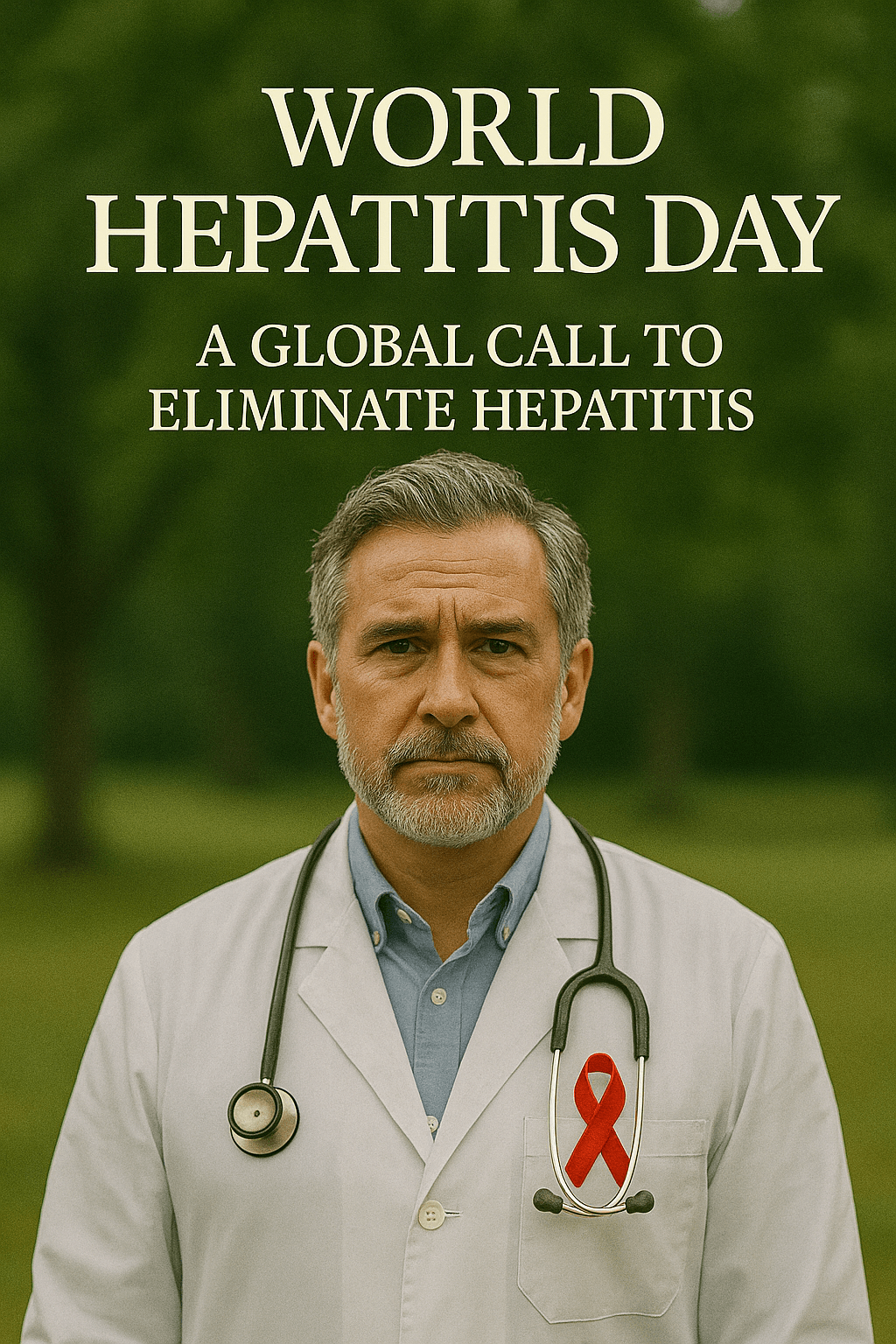World Hepatitis Day: A Global Call to Eliminate Hepatitis
World Hepatitis Day, observed every year on July 28, is a global health campaign aimed at raising awareness about hepatitis and encouraging prevention, diagnosis, and treatment. The day is one of the World Health Organization’s (WHO) officially mandated global health days and serves as a powerful platform to mobilize individuals, organizations, and governments to act against hepatitis and its devastating impact.
Why July 28?
World Hepatitis Day is commemorated on July 28 in honor of Dr. Baruch Blumberg, who discovered the hepatitis B virus and developed the first hepatitis B vaccine. He was awarded the Nobel Prize in Medicine for his groundbreaking work. This date celebrates both scientific achievement and global commitment to reducing the burden of hepatitis.
What Is Hepatitis?
Hepatitis is an inflammation of the liver, most commonly caused by viral infections. The five primary types of viral hepatitis—A, B, C, D, and E—differ in modes of transmission, severity, prevention, and treatment.
Hepatitis A and E are typically spread through contaminated food and water.
Hepatitis B, C, and D** are usually transmitted through contact with infected blood or bodily fluids.
Chronic infections, particularly with hepatitis B and C, can lead to serious health issues such as liver cirrhosis, liver failure, and liver cancer. Over 350 million people globally live with chronic hepatitis B or C, and the diseases cause more than 1.1 million deaths each year.
Theme for 2024: “We’re Not Waiting”
The 2024 theme, “We’re Not Waiting,” emphasizes the urgency of addressing viral hepatitis. It’s a call to action for communities, healthcare providers, policymakers, and individuals to take immediate steps to eliminate the disease. Whether it’s getting tested, accessing treatment, or advocating for better health services, the campaign encourages proactive engagement.
Goals of World Hepatitis Day
World Hepatitis Day plays a crucial role in achieving WHO’s goal to eliminate viral hepatitis as a public health threat by 2030. Key objectives include:
- Raising awareness about the different types of hepatitis and their impact
- Encouraging testing and diagnosis, especially in high-risk groups
- Promoting access to vaccines and treatment
- Advocating for stronger healthcare systems and better data collection
- Reducing stigma around hepatitis and liver disease
Prevention and Treatment
Vaccination: Highly effective vaccines exist for hepatitis A and B. Vaccinating newborns and at-risk populations is a vital strategy in reducing transmission.
Safe Practices: Promoting safe sex, proper sanitation, and harm reduction in drug use can significantly reduce the spread of hepatitis.
Testing and Diagnosis: Early diagnosis through routine testing can prevent the progression of liver disease and reduce transmission.
Treatment: Antiviral medications can manage hepatitis B and cure hepatitis C. However, many people remain unaware of their infection and do not receive treatment.
Role of NGOs and Health Organizations
Non-governmental organizations (NGOs) and health agencies are central to the success of World Hepatitis Day. They organize awareness campaigns, offer free testing and vaccination camps, and provide educational resources in local communities. Organizations such as the World Hepatitis Alliance and Médecins Sans Frontières work alongside WHO to amplify the day’s message and ensure no one is left behind.
NGOs also help address stigma by educating the public, supporting patients, and advocating for policies that ensure access to healthcare and affordable medicine.
Global Events and Participation
World Hepatitis Day is marked by numerous events around the world. Governments, hospitals, schools, and community organizations host:
– Health fairs and free clinics for screening and vaccination
– Educational seminars and webinars
– Social media campaigns using hashtags like #WorldHepatitisDay and #HepCantWait
– Candlelight vigils and marches to remember lives lost to hepatitis
Landmarks are often lit in yellow to symbolize awareness, and many individuals share personal stories to inspire action and reduce stigma.
Looking Ahead
Despite progress, major gaps in awareness, testing, and treatment persist. Millions remain undiagnosed or lack access to care. Tackling hepatitis requires integrated efforts from all sectors of society. With continued advocacy, investment in public health, and community participation, the goal of eliminating hepatitis by 2030 remains within reach.
Conclusion
World Hepatitis Day is more than a date on the calendar; it is a global call to action. By raising awareness, reducing stigma, and ensuring access to prevention and treatment, we can build a future free from hepatitis. On July 28, let us come together to say: We’re not waiting — for testing, for treatment, or for change


Leave a Reply
You must be logged in to post a comment.